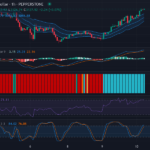
Bullish Surge Anticipated in Gold Vs US Dollar Amid Potential Overbought Market – 10/04/2025
Tháng 4 10, 2025ASEAN’s Diplomatic Triumph: Navigating U.S. Tariffs Without Retaliation
Tháng 4 10, 2025Goldman Sachs’ Insights on China’s GDP Growth Amid Escalating Trade Tensions
Recent reports have brought to the forefront critical concerns regarding China’s GDP growth, especially in light of escalating trade tensions between the United States and China. Financial giant Goldman Sachs has provided insights into the dynamics of this situation, offering a nuanced view of the challenges and developments that could shape China’s economic landscape in the coming years.
Goldman Sachs’ Current GDP Forecast for China
Goldman Sachs has maintained a GDP growth forecast for China at 4.5% for the year 2025, reflecting a steady outlook despite the turbulent trade environment. The bank acknowledges, however, that ongoing tariff escalations introduce downside risks to this forecast. The recent performance of the Chinese economy in the first quarter has provided some reassurance, as strong economic indicators suggest resilience. This performance, coupled with expectations of potential policy easing from the Chinese government, supports Goldman Sachs’ current projections. Analysts within the firm remain cautiously optimistic, despite external pressures, hoping that strategic policy responses will buffer any detrimental effects stemming from trade tensions.
The Impact of Escalating Trade Tensions
The escalating trade tensions, particularly as new tariffs loom on the horizon, pose significant risks to China’s economic growth trajectory. Analysts outside Goldman Sachs have taken a more conservative stance, adjusting their projections to around 4.2% for China’s GDP in 2025. This downward revision reflects a cautionary approach to the anticipated repercussions of trade policies that may inhibit the flow of goods and services between the world’s two largest economies. The ramifications extend beyond mere numbers; they highlight a shifting economic landscape that could affect not only China but also its trading partners around the globe. As China’s President Xi Jinping has noted, international stability and collaboration remain critical during these tumultuous times, making it essential for countries to work together despite rising tensions. China’s President Xi Jinping recently convened over 40 top global CEOs to address escalating U.S.-China trade tensions, emphasizing international stability and collaboration.
Anticipated Policy Responses from the Chinese Government
In response to these mounting pressures, Goldman Sachs expects the Chinese government to engage in policy easing aimed at stabilizing economic growth. This may manifest in various fiscal measures and adjustments in monetary policy, designed to cushion the blow from external shocks. Such proactive measures are critical in ensuring that China’s economic growth does not falter amid escalating trade disputes. The government’s ability to implement effective strategies will play a vital role in maintaining investor confidence and promoting growth in the months leading up to 2025.
Broader Global Economic Implications
The implications of these trade tensions extend well beyond China’s borders, introducing heightened recession fears on a global scale. Goldman Sachs has raised the likelihood of a U.S. recession as a direct consequence of deteriorating trade relations, exemplifying the interconnectedness of today’s global economy. Moreover, these geopolitical tensions have led to adjusted forecasts for oil prices, reflecting the anticipated volatility that could arise in energy markets influenced by shifts in trade dynamics.
In conclusion, while Goldman Sachs holds a relatively stable forecast for China’s GDP growth in the face of trade tensions, the potential for policy intervention and the ripple effects on a global scale underscore the complexities of the current economic environment. The measures taken by both China and the U.S. will significantly influence future economic stability, making this an essential issue for investors and policymakers alike.
